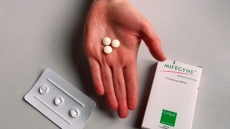Pregnancy can cause long-lasting changes -- at least for two years post-partum -- in the morphology of a woman's brain and help them adapt to challenges of motherhood such as the ability to interact with the child, researchers have found.
The study, which used magnetic resonance imaging on participants, showed that the brains of women who underwent pregnancy demonstrated a symmetrical reduction in the volume of grey matter in the medial frontal and posterior cortex line, as well as in specific sections of, mainly, prefrontal and temporal cortex in pregnant women -- brain regions associated with social cognition.
According to researchers, no changes in memory or other cognitive functions were observed during the pregnancies and, therefore, they believed that the loss of grey matter does not imply any cognitive deficits, but rather such changes correspond to an adaptive process of functional specialisation towards motherhood.
"The findings point to an adaptive process related to the benefits of better detecting the needs of the child, such as identifying the newborn's emotional state," said Oscar Vilarroya from the Autonomous University of Barcelona in Spain.

The areas with grey matter reductions were also found to overlap with brain regions activated during a functional neuro-imaging session in which the mothers of the study watched images of their own babies.
"These changes concern brain areas associated with functions necessary to manage the challenges of motherhood," added another researcher Erika Barba from the Autonomous University of Barcelona.
In addition, the reductions in grey matter were practically identical in both women who had undergone fertility treatments and women who had become pregnant naturally.
The study was published in the journal Nature Neuroscience.





